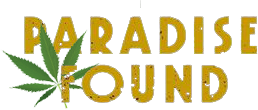A new technique has arrived that measures the potency of psilocybin and psilocin, great news for those medicated by mushrooms.
Credit goes to teams at the University of Texas at Arlington, Scottsdale Research Institute in Phoenix, Shimadzu Scientific Instruments in Maryland, and Millipore-Sigma in Round Rock, Texas. They comprise the brilliant minds behind the method for quantifying the potency of psilocybin and psilocin in magic mushrooms, known in the medical and scientific community as Psilocybe Cubensis. “These legislative changes are expected to facilitate further research and potential clinical applications,” stated Kevin Schug, the Shimadzu Distinguished Professor of Analytical Chemistry in the Department of Chemistry and Biochemistry.
Psilocybin is not a psychoactive compound. Psilocin, however, has a strong relationship to our 5-HT receptors, which are responsible for the infamous psychoactive effects.
Schug and the team’s discovery was originally published in a recent issue of Analytica Chimica Acta, breaking down the experimentation and final results. It took ten authors to explain the results, including Sabrina Islam, Sue Sisly, and Arun Babu Kumar, among other significant team members behind the breakthrough in testing.
Here’s how they did it: utilizing liquid chromatography (LC) with tandem mass spectrometry (MS/MS), they extracted and measured the potency of the mushrooms. For those without a scientific background in the audience, liquid chromatography separates molecules. As for tandem mass spectrometry, it dissects ions into fragments and reveals the chemical structure.
By combining these two techniques, the researchers studied five strains of dried, intact mushrooms: Blue Meanie, Creeper, B-Plus, Texas Yellow, and Thai Cubensis. (Familiar names to mushroom aficionados, no doubt.) The study found that the average total concentrations of psilocybin and psilocin for the Creeper, Blue Meanie, B+, Texas Yellow, and Thai Cubensis strains were 1.36, 1.221, 1.134, 1.103, and 0.879%. The entire process is surprisingly described as “relatively low-cost,” which inspires hope for present and future clinics and patients.
The revelatory results were cross-referenced in two separate labs, including a non-affiliated lab, to confirm accuracy. “As medical professionals identify more safe and effective treatments using mushrooms, it will be important to ensure product safety, identify regulatory benchmarks, and determine appropriate dosing,” Schug added about the discovery. “Established and reliable analytical methods like the one we describe will be essential to these efforts to use mushrooms in clinical settings.”
Now, time for a bit (or A LOT) of history.
Mushrooms grow in mundane substrates such as dung, mosses, soil, and wood. They can flourish in various conditions. Consider it a part of their magic. Among the hundreds of species in the Psilocybe genus, the popular kid is P. Cubensis. Growing kits for P. Cubensis are commercially available, even if they are sadly illegal in many states.
At their best, Psilocybe Cubensis and other magical mushrooms can induce perceptual distortions, mood alterations, mystical experiences, and euphoria. Under the right circumstances and perhaps with the right group of people, they not only provide a good time but an enlightening one that makes you and the world around you glow (aka a “serotonergic psychedelic”). For thousands of years, they’ve been ingested and appreciated, all the way back to indigenous tribes and civilizations. Of course, to this day, magical mushrooms are ingested in ceremonies for religious and spiritual purposes. Or, in most cases, just to have a damn good, mind-expanding time.
In 1970, Uncle Sam attempted to kill the party and curb the mushroom fun, as well as the mushroom healing. The anti-hippie President Richard Nixon and his famously corrupt administration passed the Controlled Substances Act. Nixon, a devilish general of sorts in the war on drugs, made the possession of psilocybin and psilocin illegal. Mushrooms were classified as Schedule 1 substances. In the Act’s own, outdated words, a Schedule 1 drug is essentially one with “no currently accepted medical use in the United States, a lack of accepted safety for use under medical supervision, and a high potential for abuse.”
Due to government restrictions, research on shrooms slowed down significantly. Not much support was ever there for it; researching Schedule 1 drugs in the United States necessitates registration and licensure by the Drug Enforcement Administration. Not an easy task, basically. It was a topic of importance that went undiscussed in the ‘70s, but eventually, the truth came into the light: mushrooms are viable medical treatments.
The beautiful drug’s legal status continues to evolve, albeit at a slower than desired pace. Oregon – which was the first state to decriminalize cannabis in 1973 – became the first U.S. state to legalize the federally illegal psilocybin-assisted therapy. Since then, Colorado has also decriminalized the possession of magic mushrooms. As a result, more research and potential clinical applications have been pursued and produced groundbreaking developments, such as the new technique to measure potency, that will continue to improve and even save lives, thanks to all the advocates and researchers involved.
The post Researchers Find New Way To Measure Potency of Mushrooms appeared first on High Times.
